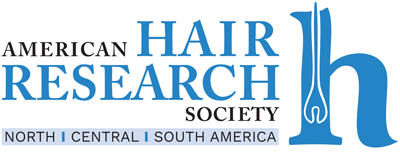Reneé Haughton, MD
Mentor: Amy McMichael, MD, Wake Forest University School of Medicine
Mentorship Title: Central Centrifugal Cicatricial Alopecia Pathogenesis and Cultural Considerations
I spent two weeks working with Dr. McMichael in her hair clinic, general dermatology clinic, and cosmetics clinic. Her practice locations during my time included Wake Forest’s Atrium Health clinic in Winston Salem, Wake Forest’s Greensboro clinic, and a resident-run clinic for the underinsured.
This was my first rotation in dermatology and as such I was a little anxious on the first day not knowing what to expect and fearful that my knowledgebase would not be up to par. Dr. McMichael, the residents, physician’s assistants, and all of the team members at the Atrium Health clinic that first day were so welcoming that my fears quickly dissipated. Maybe it was their sweet, charming southern drawl or the way they treated all of their patients like old friends. The anxiety aside, I was able to focus my energies on taking in all the knowledge about dermatology and patient care that was shared with me during my time.
During the general dermatology clinics, I saw a range of conditions in children and adults from the bread-and-butter skin checks and mild acne to more complicated hidradenitis suppurativa, atopic dermatitis, psoriasis, and bullous pemphigoid. The patient population was diverse, so I learned about diagnosis and treatment of these conditions in skin of all colors. I was able to get hands on and assisted with minor procedures such as punch biopsies, shave biopsies, and cryotherapy. I learned about the cutting-edge theories, investigations, and therapies in hair loss, primarily traction alopecia and central centrifugal cicatricial alopecia, from Dr. McMichael and her research team during hair clinics. Every patient in her hair clinic was examined with trichoscopy by an expert on the research team who pointed out important features of various scalp disorders. After a day or two of shadowing the team, I was able to seamlessly integrate into the clinic workflow by seeing patients on my own. Dr. McMichael encouraged me to formulate my own assessments and plans for patients and from this my confidence grew exponentially during my short time.
As evidence of how wonderful of a mentor Dr. McMichael is, she not only welcomed me into her clinics, she also welcomed me to the greater Wake Forest Community, her family, and Winston-Salem. It was clear from this experience with her that she genuinely cares about the professional as well as personal lives of those under her. I am fortunate to be able to continue a mentorship relationship with her even now that my time at Wake Forest has ended. We are currently working on a project to better understand shared decision making in central centrifugal cicatricial alopecia.
In summary, I highly recommend this experience with Dr. McMichael for any budding dermatologists wanting to learn more about hair and scalp disorders. Thank you to the American Hair Research Society for funding this opportunity.
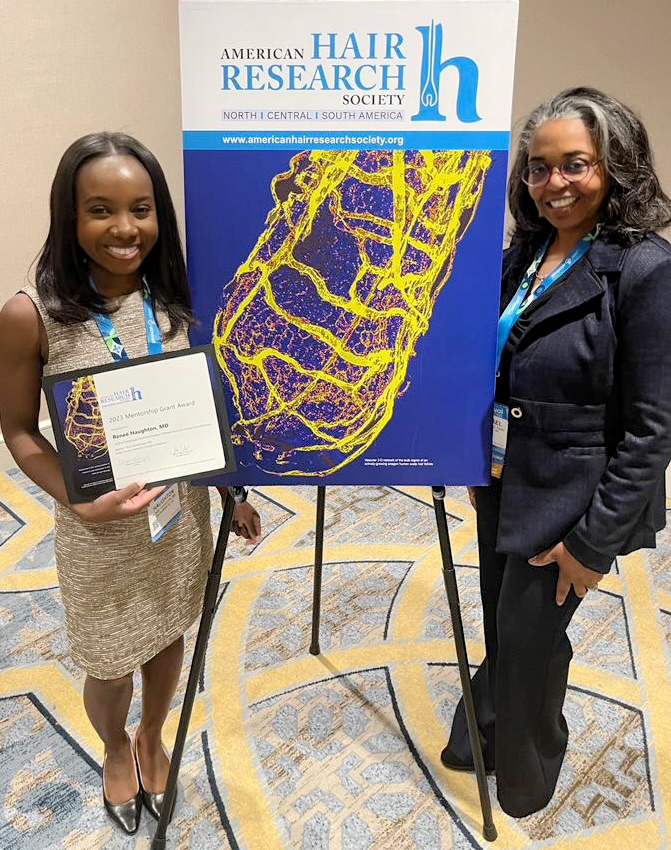
Mentee: Adaora Ewulu, BS
Mentor: Mariya Miteva, MD, University of Miami School of Medicine
Mentorship Title: Scarring Alopecias
By June 2023, I completed my AHRS mentorship experience with Dr. Mariya Miteva at the University of Miami Hospital. During my two weeks in Miami, Dr. Miteva and I began working on a research project that focuses on tracking progress of medical management of CCCA, and this project is still ongoing with plans to submit it to a journal before the end of 2023. Additionally, I had the pleasure of working with Dr. Miteva at her hair loss clinic which took place Monday-Friday from 8am to 5pm. Twice a week, she also allowed me to look at hair biopsies under the microscope while simultaneously giving brief lectures on different hair pathology and cycles of hair growth. I learned about treatment strategies that were effective depending on the type of alopecia the patient had. For example, someone with female-patterned hair loss might have more success with consistent use of minoxidil while someone with CCCA may struggle to see growth in areas where they have permanent damage to their hair follicles. One thing in particular that stood out to me about Dr. Miteva’s bedside manner was that she took her time with each patient. Whether it was a follow-up patient or a new patient, the vists lasted on average 40 minutes each. In detail, she spoke with them about their disease, realistic expectations they should have regarding hair growth, and what the recommended treatment options were. Patients reacted to her words with varying emotions. Some were surprised that they would have to wait several months to see even the smallest bit of hair growth. Others were excited there was a possibility that they could gain some of their confidence back.
Alopecia can affect patients both physically and emotionally. There were older adult patients who shared stories of being bullied or ridiculed at their jobs for their appearance. There were adolescents who cried tears of frustration in the room because kids at their school teased them anytime their hair was exposed. One thing in common with these patients is that they all wanted a permanent solution to their hair growth and unfortunately, results from medications like minoxidil, finasteride, etc are not permanent and they come with their own side effects that may not be tolerable for some. I have been inspired to seek new ways of addressing hair loss in dermatology. My dream is to own a private practice that has a hair salon in it. Within this salon, I want to offer my own brand of hair prostheses for my hair loss patients who are open to hair camouflaging. A lot of people shy away from wearing wigs because of the risk of looking unnatural, but wig construction techniques have evolved over the years. I am determined to make sure my future brand offers natural-looking wigs personalized to each patient depending on their needs. Medical wigs are not focused on in dermatology residency training, but I think it is important for dermatologists to be educated on the different types so that they can suggest alternative options for hair loss patients outside of pharmacological management.
While in Miami, I was connected with Dr. Nusbaum, a hair transplant surgeon and dermatologist who works at the Miami Hair Institute. He allowed me to shadow him for a day during my two weeks, and it was at that time that I was motivated to add to my skill set as a future hair loss specialist. Dr. Nusbaum started my day with a lecture on hair restoration and the different methods most commonly used today. He then allowed me to watch the transplant procedures being performed on his patients. As I watched, I felt sure that this was something I could and wanted to do in the future. Additionally, it was very rewarding seeing follow-up patients express overwhelming happiness with how successful their results had been since undergoing their initial procedure.
I recently matched into dermatology residency in Southern California and have been intentionally trying to connect with hair transplant surgeons and dermatologists in that area. My time at the Miami Hair institute was brief, so I plan to seek further mentorship with other AHRS dermatologist/hair transplant surgeons who can train me both during and after residency.
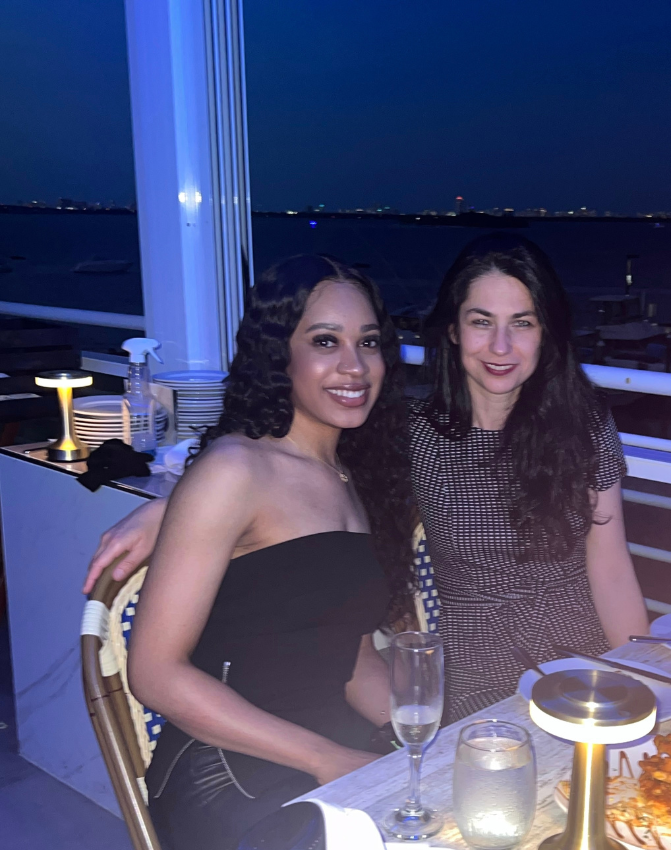
Mentee: Mariia Konchak, MD,
Mentor: Antonella Tosti, MD, University of Miami School of Medicine
Mentorship Title: Trichoscopy During JAK Inhibitors Treatment
I am very grateful to AHRS for the opportunity to visit the University of Miami and participate in hair research with wonderful hair expert and my mentor Prof. Antonella Tosti. During this month, we treated many patients with alopecia areata , did trichoscopy and saw clear results of treatment with JAK inhibitors. I’m also grateful to Antonella Tosti for teaching me and showing all her tips in treatment of various types of alopecia. That will help me to work for the best results. Moreover I not only acquired valuable knowledges and skills in hair research but also met a great people which became my friends.
It was very nice to work in such a warm and supportive atmosphere. All patients and residents love Dr. Tosti. She is very kind and generous to help and to share her knowledges. I was very pleased to stay there and didn’t want to come back home. Thank you AHRS for this unforgettable experience and I’m very happy that I can bring something new to Ukraine.
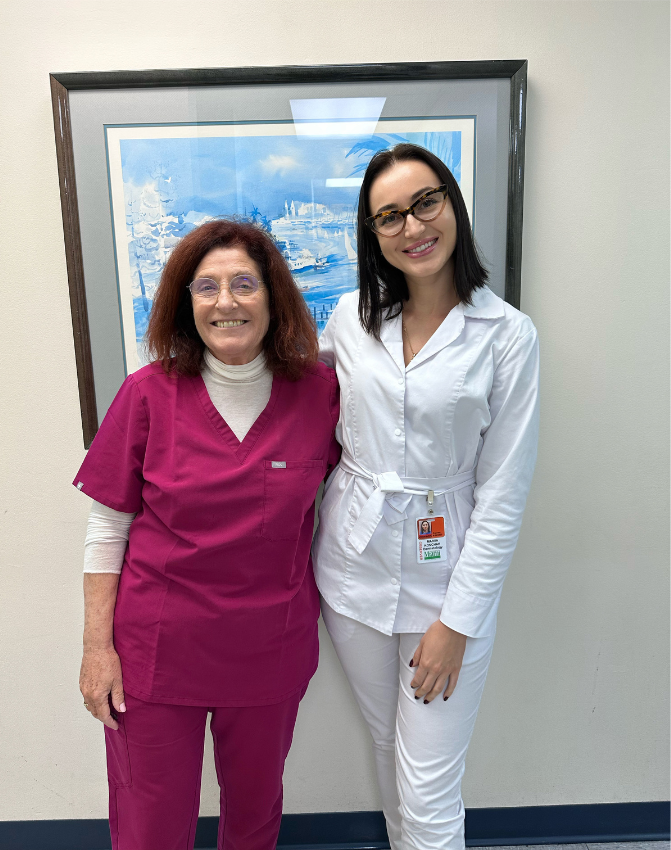
Mentee: Divya Sharma, MD, FAAD
Mentor: Maryanne Senna, MD, Lahey Dermatology
Mentorship Title: Building a Hair Clinic
I would like to express a huge thank you to the American Hair Research Society for the mentorship opportunity with Dr. Maryanne Senna. Dr. Senna is an outstanding mentor and I could not ask for a better person to learn from. She is an excellent teacher who is passionate about hair health and has an unbelievable fund of knowledge in a rapidly evolving space.
Before the AHRS mentorship, I had introduced a hair specialty clinic and I was doing my best with self-directed learning and informal guidance. Over time, it became increasingly clear that I would have a higher chance of being a more effective and confident provider by learning more practical knowledge from someone with greater experience than me. Also, to be a high quality expert, in a time where unethical practices and unqualified providers are trying to dominate the hair space, I realized that I must at the cutting edge of clinical and research developments as well as pursue leadership and advocacy. Dr. Senna combines all these aspects as a genuine authority on hair loss.
Through my mentorship experience, at Lahey Health from April 2023-May 2023, I had the chance to learn directly from Dr. Senna and understand the ins and outs of: running a subspecialty clinic, guiding patients from diagnosis to treatment, leading research efforts, and advocating for improved patient care. I could see Dr. Senna’s connection with patients firsthand; they really felt well-supported and taken care of because of her credibility, work ethic, and integrity with which she practices. I was also inspired by her enthusiasm for supporting her colleagues and fostering mentorship. As a mentee, I felt like Dr. Senna believed in me as a future colleague and wanted to equip me with the guidance and resources to develop my expertise.
This mentorship opportunity has truly been a catalyst in my career as I have continued to build my expertise in hair loss as well as increase my involvement in advocacy and clinical research. I am looking forward to further establishing myself as a hair specialist and paying it forward.
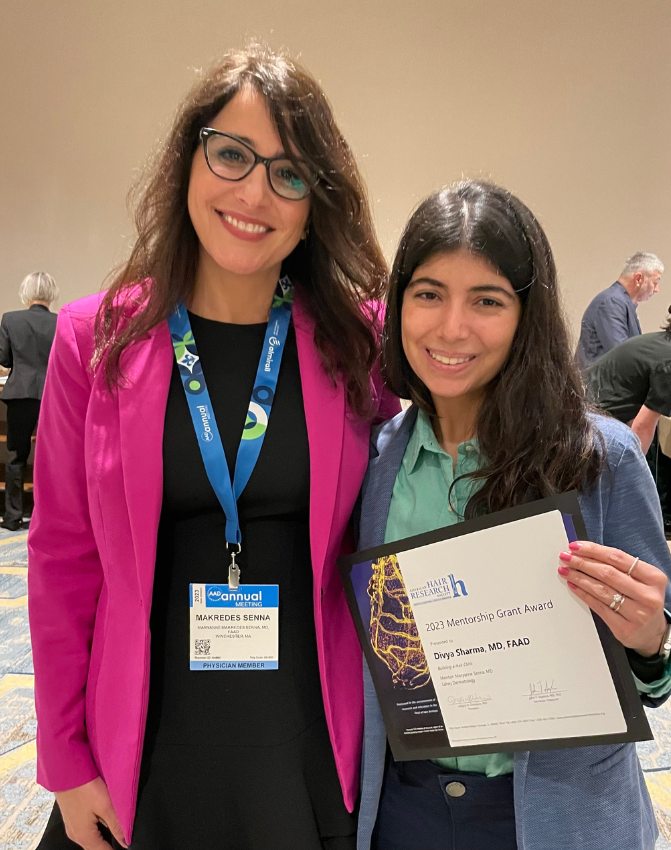
Mentee: Chiemeli Onyekonwu
Mentor: Temitayo Ogunleye, MD, University of California, Riverside School of Medicine
Mentorship Title: Hair Loss and Scalp Disorders
Thank you to the American Hair Research Society, Dr. Ogunleye, and the faculty and residents at Penn Medicine for being warm and welcoming during my mentorship!
In December, I worked under Dr. Ogunleye at the renowned Hair and Scalp Disorder Clinic at the Perelman Center for Advanced Medicine. During my time there, I learned how dermatologists methodically diagnose autoimmune hair disorders compared to scarring and non-scarring hair disorders. I observed the various treatments that can help manage the progression of hair loss from patients significantly impacted by disorders such as Central Centrifugal Cicatricial Alopecia, Fibrosing Frontal Alopecia, Alopecia Areata, and Telogen Effluvium. The Hair and Scalp clinic does a great job implementing their comprehensive hair assessment for each patient, occasionally including labs and biopsies. In the future, I plan to implement the same attention, compassion, and creativity that Dr. Ogunleye and the dermatology faculty had with each patient when assessing symptoms and creating individual treatment plans. Exposure to hair and scalp disorders in patients from various skin tones and hair types is crucial to my journey toward becoming a dermatologist and a leader in hair loss disorders; I am grateful that I got this exposure at Penn Medicine.
In addition to working in the hair clinic, I attended lectures and grand rounds on complex and general dermatology consults and cases. My favorite memory was volunteering alongside Dr. Ogunleye, Dr.Taylor, and the amazing Skin of Color Fellows at Penn Medicine in a dermatology suturing workshop for high school students. It was phenomenal to see Dr. Ogunleye's influence on her community, her dedication to teaching, and her commitment to
training the next generation of dermatologists. It was impactful to know that just a few years ago, Dr. Ogunleye was in my position as a mentee for the AHRS mentorship grant and now is a mentor; it will indeed be a full circle moment when I get to do the same. I could not have asked for a better mentor and immersive clinical experience.
Thank you again, AHRS, Dr. Ogunleye, and Penn Medicine, for having me!
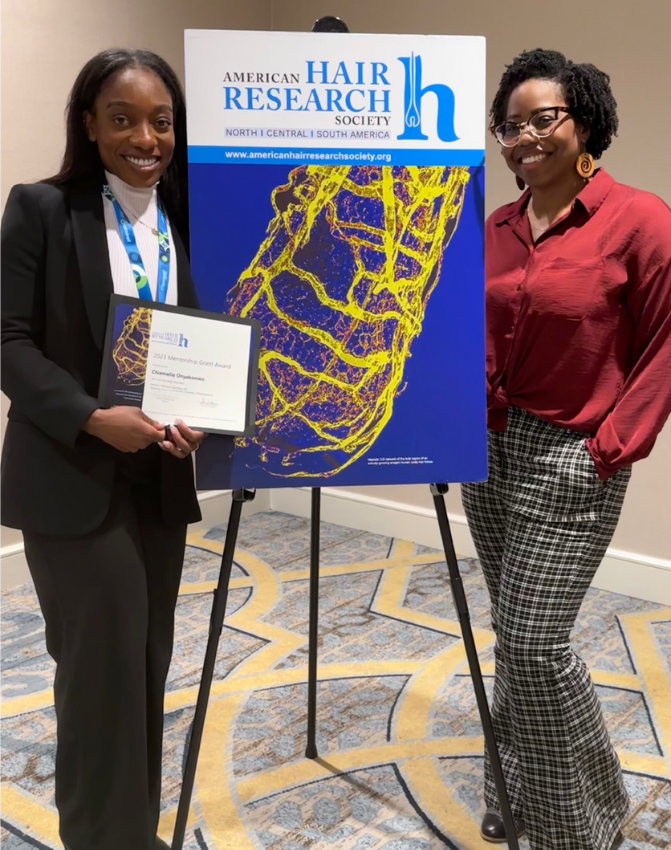
Mentee: Christina de Castro Brommonschenkel, MD
Mentor: Amy McMichael, MD, Wake Forest University School of Medicine
Mentorship Title: Hair and Scalp Disorders and Skin Diseases of Deeply Pigmented Skin
I had the opportunity to stay with Dr. McMichael during October of this year, shadowing her practices at Wake Forest’s Atrium Health clinic in Winston Salem, the Wake Forest clinic in Greensboro, and a resident-run clinic for the underinsured. It was a unique, wonderful professional and personal experience. I was very well received by Dr. McMichael, the residents, physician’s assistants, and all the team members at the Atrium Health clinic.
I was able to get new experience with some conditions such as central cicatricial and traction alopecia that are not as common complaints in my service and learned treatments that are not yet offered in my country (such as the use of JAK inhibitors and platelet rich plasma therapy). I also followed care for various dermatological diseases, from folliculitis to Hailey-Hailey disease, and I learned how some dermatological diseases can present differently on black skin, which highlighted to me the importance of this differential response in the clinical practice. We discussed several hospitalized patient cases and related pathologies. I presented and discussed my own assessments and plans for patients with Dr. McMichael and learned a lot from her experience, which was quite enriching.
Dr. McMichael is a mentor capable of creating a warm, participative, supportive and enthusiastic atmosphere. I am fortunate to be able to continue a mentoring relationship with her even now that I am back in Brazil. I strongly recommend this experience with Dr. McMichael for dermatologists wanting to learn more about hair and scalp disorders and skin disease of deeply pigmented skin.
Thank you AHRS for this unforgettable and rewarding experience and Dr. McMichael for your time and strong and enthusiastic dedication to this mentorship program.
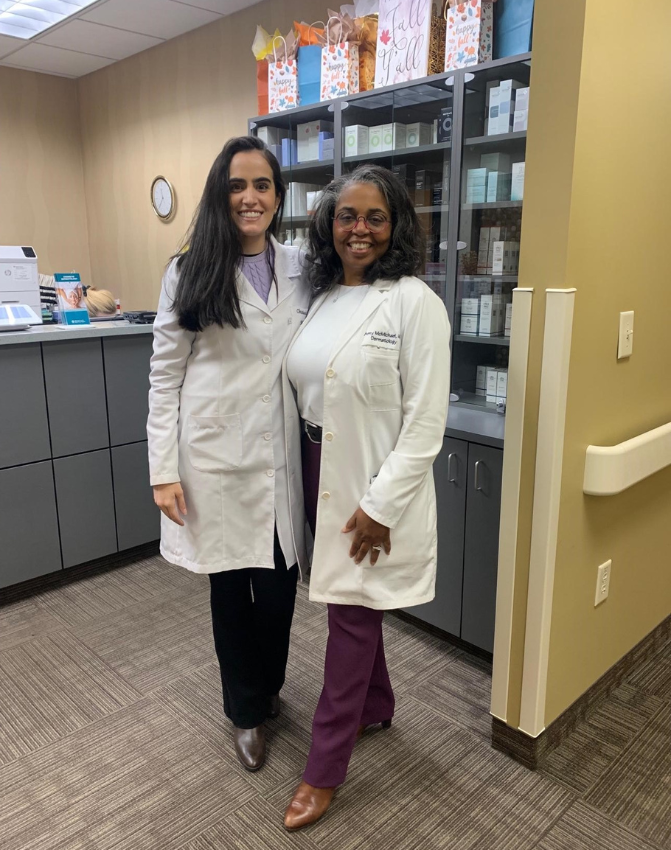
Mentee: Shivali Devjani, MS
Mentor: Antonella Tosti, MD, University of Miami School of Medicine
Mentorship Title: Hair Loss and Nutrition - Looking at Foods as Drugs
In October, I was fortunate to complete a weeklong observership with Dr. Antonella Tosti at the University of Miami Miller School of Medicine Department of Dermatology. The main goal of the mentorship was to become acquainted with one another and develop a relationship that would not be made possible otherwise. Furthermore, I aimed to further my understanding in hair loss disorders and learn from Dr. Tosti’s extensive knowledge base and experience.
Reflecting on my experience there, I learned so much in such a short period of time. Although alopecia is only a small part of dermatology, I realized through my week with Dr. Tosti just how nuanced approaches to alopecia can be. Different providers may have different approaches and opinions on the use of certain ingredients and medications but are often successful in their own ways. One instance of this was learning from Dr. Tosti that Vitamin A in multivitamins can contribute to hair loss.
Furthermore, I was lucky to shadow Dr. Tosti both in her academic practice at the University of Miami and her private practice in South Beach, Florida. The patient population in both practices varied, as well as the types of procedures she performed at each location. We observed a lot of platelet-rich plasma procedures at her clinic in South Beach and more medicinal approaches to hair loss at her faculty clinic. I was able to work with residents at her faculty clinic, whereas I had more firsthand exposure as her scribe at her South Beach clinic.
Throughout my time with Dr. Tosti, we spoke about potential projects that we could work on. I had a general interest in hair loss and lifestyle, and together we brainstormed about looking into the services offered by medical spas in Miami. I am still continuing to work on this project now. We are planning to create a paper illustrating and quantifying these services for both dermatologists and patients to be more aware of these medical spas. Dr. Maryanne Senna exposed me to a new world of hair loss disorders and treatments during my research year last year, and Dr. Tosti furthered that knowledge. I am so grateful to the AHRS for this opportunity.
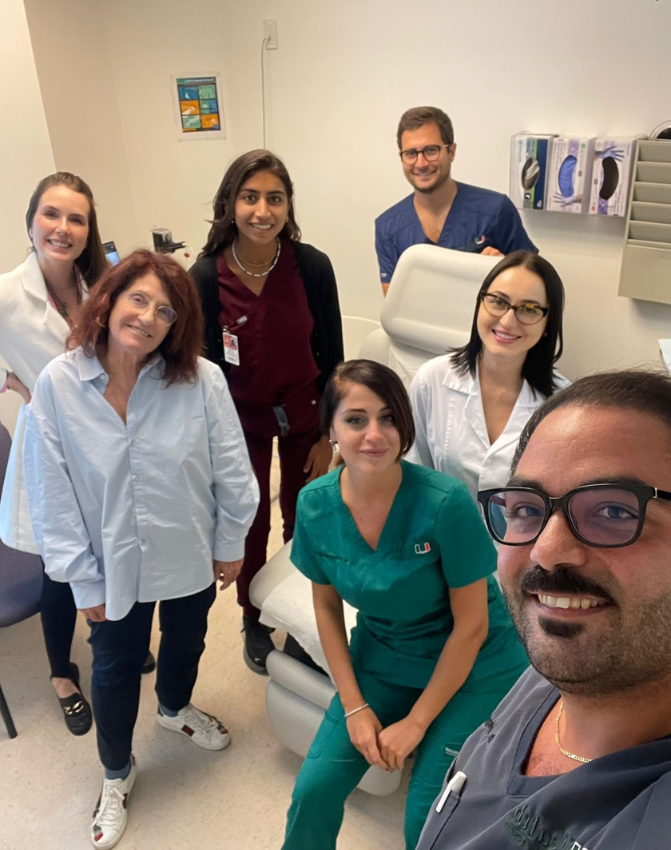
Mentee: Peter Feldman BSc (Eng) PhD (Medicine)
Mentor: Dominique Van Neste, MD PhD, Skinterface - Belgium
Mentorship Title: Productivity measurements of the hair follicle and follicular unit (2023)
Over the past ten years, I have pursued a goal to maintain and regenerate an optimal scalp hair phenotype. This has involved biological regulators, restorative interventions, follicular unit productivity and the measurements thereof. The clinical prognosis of hair and scalp disorders is dependent on the translation of dynamic measurements into phenotypes and utilitarian surrogates. As a late career-change researcher, drawing on experiences of other fields was helpful; however, each field tends to follow an artful orthodoxy developed over decades, progressively enabled by new tools and technologies. The AHRS mentorship program presented an opportunity to engage with one of the most accomplished experts in the hair measurement field.
On December 11, 2021, at 5:09 am, I received the following email: "Hi Dr. Feldman, would you agree to discuss some details about the ALRV5XR studies? Thanks for your reply. D Van Neste." Dr. Van Neste has studied hair follicle productivity in hair and scalp disorders for nearly fifty years. He has published prolifically on this subject and could be considered one of the most respected experts in the field of human hair measurement and hair follicle productivity.
(Whiting, Waldstreicher et al. 1999) proposed the hair miniaturization reversal hypothesis in AGA patients treated with oral finasteride, and over the next 20 years (Van Neste 2006, Van Neste 2019) provided strong evidence against this hypothesis. I published two randomized clinical trials (Feldman, Fiebig et al. 2021, Feldman, Fiebig et al. 2021) showing results in hair regrowth and various other trichodynamic parameters, including statistically significant reversal of hair miniaturization in androgenetic alopecia subjects using ALRV5XR. Dr. Van Neste considered my findings interesting yet unlikely; however, as a curious scientist, he wanted me to validate these findings with other methods. Over the coming months, Dr. Van Neste would ask me many challenging questions to re-evaluate this finding using more empirical methods. The unofficial mentorship became official with the grant from the AHRS Mentorship program in 2023.
We met and reviewed various details about methods to measure miniaturization reversal. We held periodic online meetings to discuss challenges and results. Dr. Van Neste deconstructs the scalp hair phenotype status into a time dynamic of hair fibre density, diameter and growth rate, the basic principles of scalp coverage and other descriptive surrogates. He co-developed the contrast-enhanced phototrichogram (CEPTG) during the 1990s (Van Neste 2001, Leroy and Van Neste 2002), which remains the gold standard for measuring these variables. Improvements in trichoscopic and computing technologies have led to the broad use of these methods. He has determined that the time to complete coverage of a normal, healthy scalp is approximately 20-21 days (Van Neste 2021). Dr. Van Neste showed me how to interpret hair and measure nuances based on observations of follicular unit productivity with the complete spectrum of the cycling status of each follicle: anagen, catagen, telogen, exogen, and finally, the lag phase. The cycling drives variability in density, hair diameter and daily linear growth rate, each of which is influenced directly or indirectly by a range of intrinsic and extrinsic characteristics.
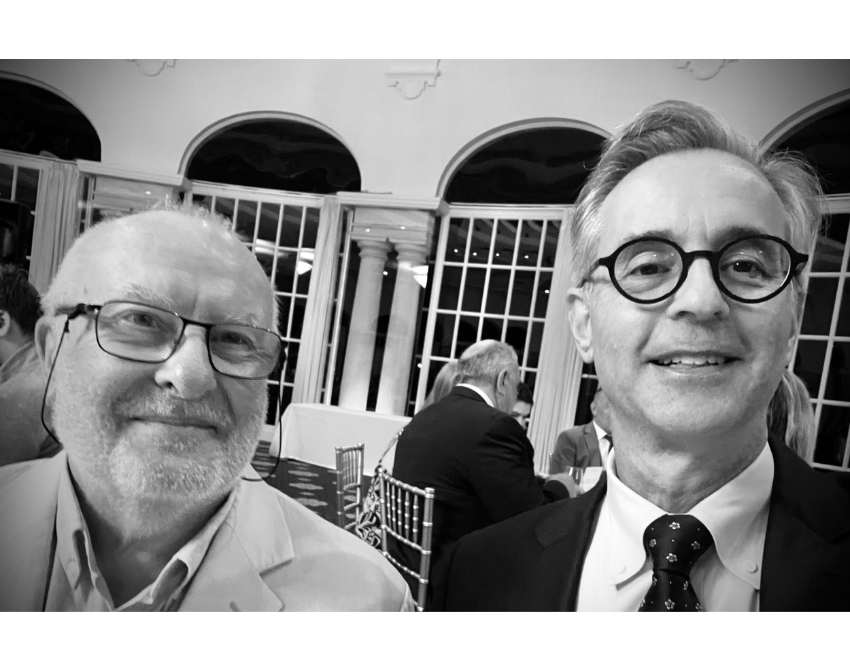
Dr. Van Neste asked me to focus on measuring the same hairs within the same FUs over as long a period as possible with as high a frequency as possible. We resolved that the initial 3-6 months of intervention in the 2 RCTs with few longitudinal observations might not lend itself to a useful evaluation period; however, I was lucky to have a multi-year case with many CEPTGs at the same scalp site marked by a tattoo. Dr. Van Neste instructed me to select a sample of FUs with at least 2-3 hairs at baseline and to follow these FUs with measures of each hair in the FU. I had accumulated a series of 16 CEPTGs of the same patient over five years that could be used for this purpose. I selected 10 FUs that were measured at eight time points over the five years, i.e. baseline, three months, six months and yearly thereafter. Each hair's parameters were measured and documented. Dr. Van Neste reviewed the work and offered guidance on analyzing and interpreting the measurements.
This mentorship gave me a new appreciation of the challenges in measuring hair, particularly the difficulty in conducting and comparing clinical trials. It also gave me insight into challenges with published meta-analyses that include studies measuring outcomes of different variables and hair measurement methods. Dr. Van Neste imparted a critical eye for discerning meaningful evidence in the field. The mentorship also allowed me to use a more precise method to measure long-term miniaturization reversal and maintenance of the same hairs under the watchful eye of a peer-recognized Master of the Field.
As a late career-change researcher, the AHRS Mentorship program with Dr. Van Neste has been instrumental in my journey and understanding of hair follicles and measurement. Dr. Van Neste has a mind for pragmatic precision in an imprecise field. The outcome of this AHRS Mentorship grant has led to acceptance at the WHRS 2024 of 4 posters and one presentation.
Thank you to the AHRS and Dr. Dominique Van Neste for sharing his experience and wisdom.
Sincerely,
Peter Feldman
